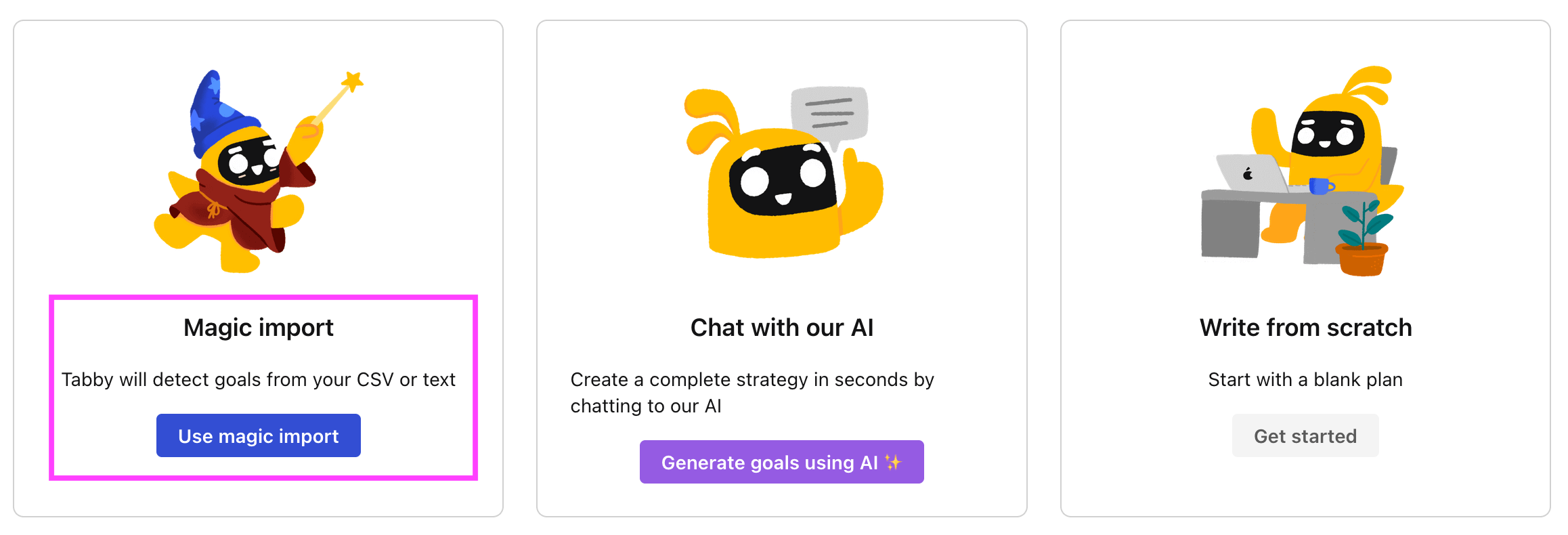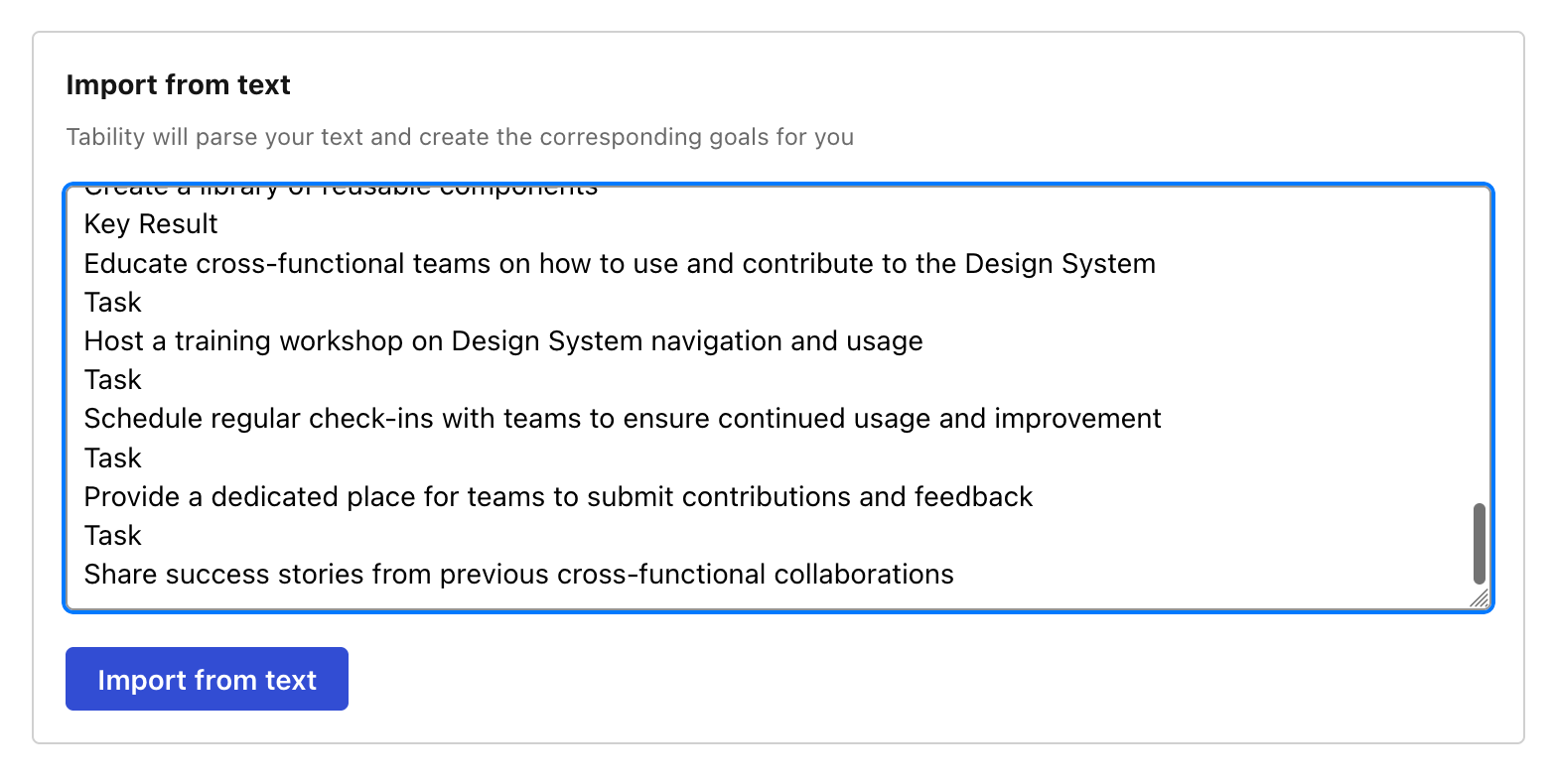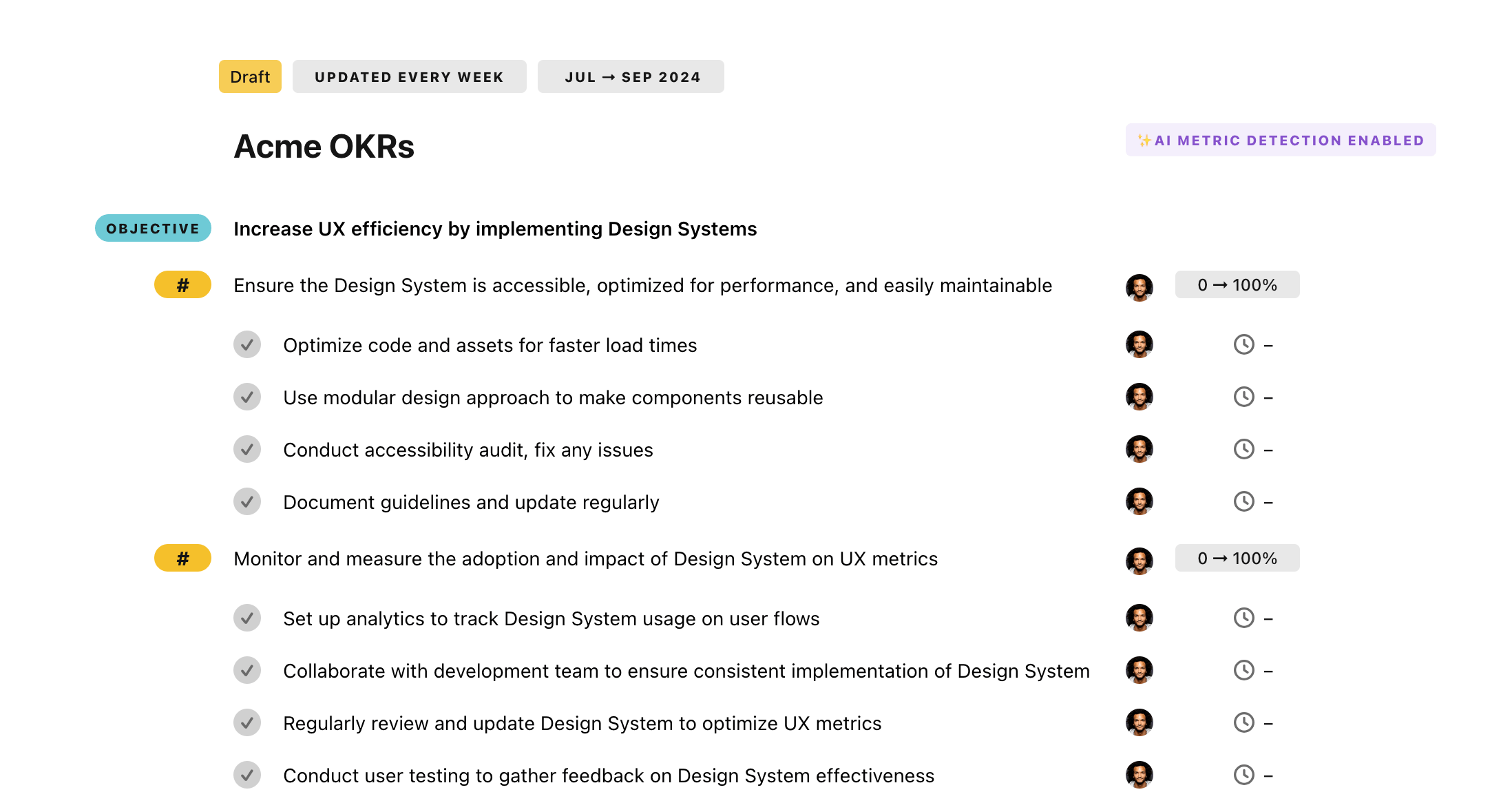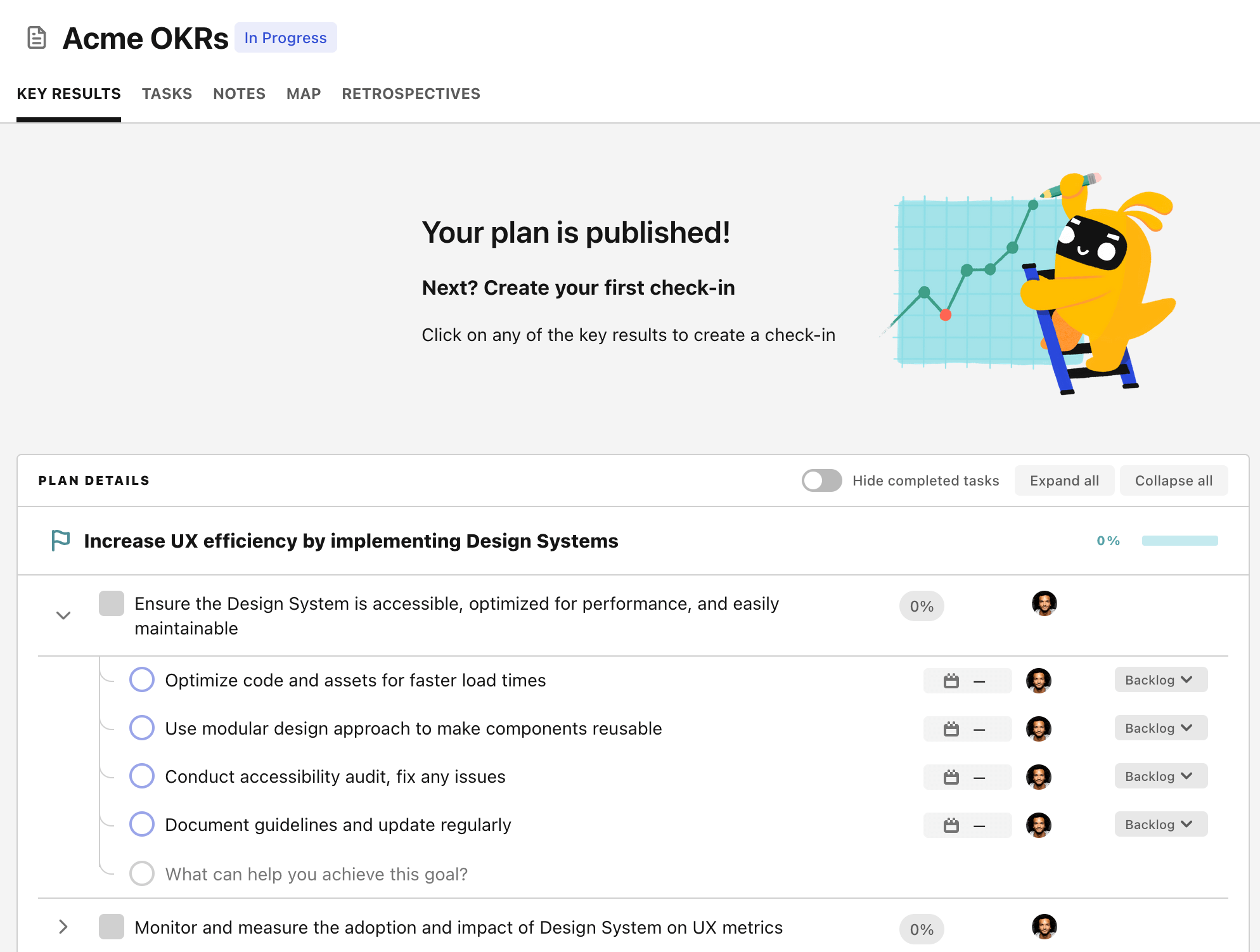OKR template to enhance completion proficiency for monthly contact forms
Your OKR template
The first key result focuses on boosting the completion rate by 60% through user-friendly form designs. This would involve a redesign of the forms emphasizing ease of use, carrying out A/B testing, and adopting features from top-performing form designs that reflect a high user engagement and completion rate.
The second key result aims at improving staff form-filling skills by 70% through an enhanced training program. This necessitates the creation and modification of a new program, identifying flaws in existing training methodologies, and development of improved and targeted training modules to achieve the desired proficiency.
Lastly, the third key result is the regular monitoring through weekly performance reviews to identify and rectify potential form-filling issues. This measure allows for prompt resolution, identification of discrepancies, and ensures regular check-ins to closely follow the form-filling performance.
ObjectiveEnhance completion proficiency for monthly contact forms
KRImplement user-friendly form designs to boost completion rate by 60%
Redesign forms prioritizing user-friendliness
Perform A/B testing, analyze and adjust forms
Research top-performing form designs for inspiration
KREnhance training program to improve staff form-filling skills by 70%
Implement, monitor, and adjust new program
Identify weak points in current form-filling training methods
Develop improved, targeted training modules
KRConduct weekly performance reviews to identify and correct form-filling issues
Address and correct identified issues immediately
Identify any discrepancies or mistakes in forms during review
Schedule regular weekly reviews for form-filling performance
How to edit and track OKRs with Tability
You'll probably want to edit the examples in this post, and Tability is the perfect tool for it.
Tability is an AI-powered platform that helps teams set better goals, monitor execution, and get help to achieve their objectives faster.
With Tability you can:
- Use AI to draft a complete set of OKRs in seconds
- Connect your OKRs and team goals to your project
- Automate reporting with integrations and built-in dashboard
Instead of having to copy the content of the OKR examples in a doc or spreadsheet, you can use Tability’s magic importer to start using any of the examples in this page.
The import process can be done in seconds, allowing you to edit OKRs directly in a platform that knows how to manage and track goals.
Step 1. Sign up for a free Tability account
Go tohttps://tability.app/signup and create your account (it's free!)
Step 2. Create a plan
Follow the steps after your onboarding to create your first plan, you should get to a page that looks like the picture below.

Step 3. Use the magic importer
Click on Use magic import to open up the Magic Import modal.
Now, go back to the OKR examples, and click on Copy on the example that you’d like to use.

Paste the content in the text import section. Don’t worry about the formatting, Tability’s AI will be able to parse it!

Now, just click on Import from text and let the magic happen.

Once your example is in the plan editor, you will be able to:
- Edit the objectives, key results, and tasks
- Click on the target 0 → 100% to set better target
- Use the tips and the AI to refine your goals
Step 4. Publish your plan
Once you’re done editing, you can publish your plan to switch to the goal-tracking mode.

From there you will have access to all the features that will help you and your team save hours with OKR reporting.
- 10+ built-in dashboards to visualise progress on your goals
- Weekly reminders, data connectors, and smart notifications
- 9 views to map OKRs to strategic projects
- Strategy map to align teams at scale